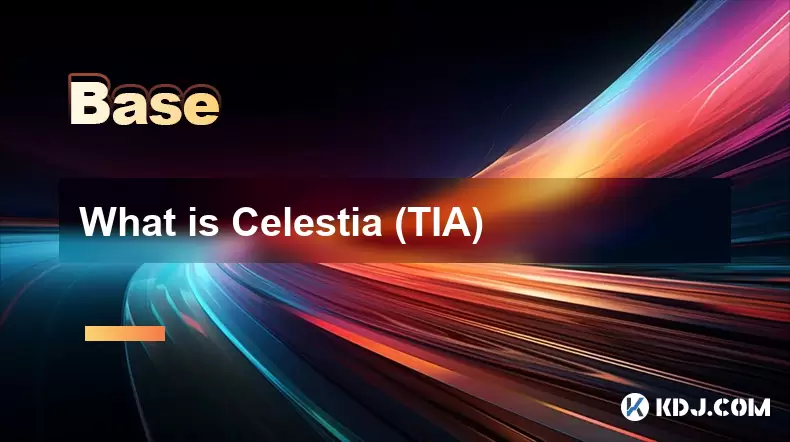-
 Bitcoin
Bitcoin $118,698.3676
0.16% -
 Ethereum
Ethereum $3,428.4877
5.97% -
 XRP
XRP $3.2496
9.52% -
 Tether USDt
Tether USDt $1.0002
0.00% -
 BNB
BNB $725.6930
4.36% -
 Solana
Solana $174.8923
4.52% -
 USDC
USDC $0.9997
-0.02% -
 Dogecoin
Dogecoin $0.2139
6.02% -
 TRON
TRON $0.3155
4.62% -
 Cardano
Cardano $0.8045
7.12% -
 Hyperliquid
Hyperliquid $46.6582
-1.72% -
 Stellar
Stellar $0.4676
0.80% -
 Sui
Sui $4.0143
0.38% -
 Chainlink
Chainlink $17.1546
2.97% -
 Hedera
Hedera $0.2458
3.27% -
 Bitcoin Cash
Bitcoin Cash $496.5967
-0.06% -
 Avalanche
Avalanche $22.8813
3.13% -
 Shiba Inu
Shiba Inu $0.0...01439
3.42% -
 UNUS SED LEO
UNUS SED LEO $8.8389
0.42% -
 Toncoin
Toncoin $3.2113
2.82% -
 Litecoin
Litecoin $101.2646
4.24% -
 Polkadot
Polkadot $4.2262
2.32% -
 Monero
Monero $340.4295
2.92% -
 Pepe
Pepe $0.0...01365
2.92% -
 Uniswap
Uniswap $8.9702
-2.78% -
 Bitget Token
Bitget Token $4.7675
2.00% -
 Dai
Dai $0.9998
-0.02% -
 Ethena USDe
Ethena USDe $1.0003
-0.04% -
 Aave
Aave $324.6394
-2.11% -
 Bittensor
Bittensor $433.6051
-0.88%
What is Celestia (TIA)
Celestia is a modular blockchain network that separates consensus, data availability, and execution layers to improve scalability and customization for developers building decentralized applications.
Jul 14, 2025 at 03:21 am

Understanding the Basics of Celestia (TIA)
Celestia is a modular blockchain network that aims to revolutionize how blockchains are structured and operate. Unlike traditional monolithic blockchains, which handle data availability, consensus, execution, and settlement all within a single layer, Celestia separates these functions into different modules. This allows developers to build more scalable and customizable blockchain solutions.
The native token of the Celestia network is TIA, which plays a crucial role in securing the network and facilitating transactions. TIA holders can participate in governance and contribute to the decentralization of the network through staking mechanisms.
The Core Components of Celestia
At the heart of Celestia's design is its data availability layer, which ensures that all transaction data is accessible to network participants without requiring full nodes to store all information. This enables lighter clients and improves scalability significantly.
- Consensus Layer: Celestia uses a Proof-of-Stake (PoS) mechanism for consensus, ensuring security and decentralization.
- Execution Layer: Execution is handled off-chain by rollups or other execution environments, allowing flexibility in smart contract deployment.
- Settlement Layer: Although not yet fully implemented, Celestia plans to integrate with other networks for finality and dispute resolution.
This modular architecture makes Celestia highly adaptable to various use cases, including decentralized finance (DeFi), non-fungible tokens (NFTs), and Web3 applications.
How Does Celestia Differ From Traditional Blockchains?
Traditional blockchains like Bitcoin and Ethereum are monolithic, meaning they combine all layers—consensus, data availability, execution, and settlement—into one system. While this approach simplifies design, it limits scalability and customization.
Celestia introduces modularity, allowing each layer to be developed, upgraded, and optimized independently. For example:
- Developers can deploy their own execution environment without needing to alter the base layer.
- The data availability sampling (DAS) mechanism ensures that even light clients can verify data integrity efficiently.
This separation leads to faster development cycles, better interoperability, and higher throughput compared to conventional systems.
Use Cases and Applications Built on Celestia
Celestia serves as a foundational infrastructure for building rollups, app-specific chains, and interoperable ecosystems. Several projects have already started leveraging Celestia’s modular framework:
- Rollkit: A toolkit that enables developers to launch sovereign rollups using Celestia’s data availability and consensus.
- Cevmos: A Cosmos SDK-based application chain built on top of Celestia, demonstrating how modular and interoperable systems can coexist.
These examples highlight how Celestia fosters innovation by reducing the complexity of launching new chains while maintaining high levels of security and decentralization.
How to Interact With Celestia (TIA)
To begin interacting with the Celestia network, users need to perform several steps:
- Set Up a Wallet: Use compatible wallets like Keplr or Metamask (with appropriate configurations) to manage your TIA tokens.
- Acquire TIA Tokens: Purchase TIA from supported exchanges such as Binance, KuCoin, or MEXC.
- Stake TIA: Participate in network validation by staking your tokens via the official staking interface or through validators.
- Deploy Rollups or Apps: Developers can use tools like Rollkit to deploy custom rollups directly onto the Celestia network.
Each step requires careful attention to ensure compatibility and avoid loss of funds. Always double-check wallet addresses and network settings before initiating any transaction.
Frequently Asked Questions About Celestia (TIA)
What is the maximum supply of TIA tokens?
TIA has a dynamic supply model, where inflation is controlled through staking rewards and governance decisions. There is no hard cap on the total supply.
Can I run a node on the Celestia network?
Yes, you can run either a validator node or a light node depending on your hardware capabilities and desired level of participation.
Is Celestia compatible with Ethereum-based applications?
While Celestia itself is not EVM-compatible, it supports execution environments that can emulate Ethereum Virtual Machine (EVM) behavior, enabling Ethereum dApps to migrate with minimal changes.
How does Celestia achieve decentralization without full nodes?
Through data availability sampling, Celestia allows light nodes to probabilistically verify that all data is available without downloading the entire dataset, maintaining decentralization at scale.
Disclaimer:info@kdj.com
The information provided is not trading advice. kdj.com does not assume any responsibility for any investments made based on the information provided in this article. Cryptocurrencies are highly volatile and it is highly recommended that you invest with caution after thorough research!
If you believe that the content used on this website infringes your copyright, please contact us immediately (info@kdj.com) and we will delete it promptly.
- Winning Design: Nine-Year-Old's Art Becomes a Chocolate Coin!
- 2025-07-18 01:10:12
- Bitcoin, Market Cap & Strategy: Decoding the Crypto Game in 2025
- 2025-07-18 01:10:12
- Plume and Colb Finance: Tokenizing Pre-IPO Equities for the Blockchain Era
- 2025-07-18 00:35:12
- Bitcoin's Bull Run: Can It Break Through the Bearish Sentiment?
- 2025-07-18 00:35:12
- Silver Breaks 14-Year High: What's Driving the Rally?
- 2025-07-17 22:50:13
- Ozak AI, Stellar (XLM), and Solana (SOL): The New Crypto Watchlist Stars
- 2025-07-17 23:50:12
Related knowledge

What is the Bitcoin dominance index
Jul 12,2025 at 10:35pm
Understanding the Bitcoin Dominance IndexThe Bitcoin Dominance Index, often abbreviated as BTC.D, is a metric used to measure Bitcoin's market capital...

What is the Bitcoin dominance index
Jul 11,2025 at 04:29am
What is the Bitcoin Dominance Index?The Bitcoin Dominance Index is a metric used to gauge Bitcoin's market capitalization relative to the total market...

Can crypto be a hedge against inflation
Jul 14,2025 at 12:21am
Understanding the Concept of Hedging Against InflationInflation refers to the general increase in prices and fall in the purchasing value of money ove...

Can crypto be a hedge against inflation
Jul 12,2025 at 12:07pm
Understanding the Role of Blockchain in Decentralized Finance (DeFi)Blockchain technology serves as the backbone of decentralized finance, offering a ...

What are account abstraction wallets
Jul 13,2025 at 01:43am
Understanding the Concept of Account AbstractionAccount abstraction is a term frequently used in the Ethereum ecosystem, particularly within discussio...

What does "gas limit" vs "gas price" mean
Jul 13,2025 at 04:00am
Understanding the Basics of Gas in Blockchain TransactionsIn the Ethereum and other EVM-compatible blockchains, every transaction requires computation...

What is the Bitcoin dominance index
Jul 12,2025 at 10:35pm
Understanding the Bitcoin Dominance IndexThe Bitcoin Dominance Index, often abbreviated as BTC.D, is a metric used to measure Bitcoin's market capital...

What is the Bitcoin dominance index
Jul 11,2025 at 04:29am
What is the Bitcoin Dominance Index?The Bitcoin Dominance Index is a metric used to gauge Bitcoin's market capitalization relative to the total market...

Can crypto be a hedge against inflation
Jul 14,2025 at 12:21am
Understanding the Concept of Hedging Against InflationInflation refers to the general increase in prices and fall in the purchasing value of money ove...

Can crypto be a hedge against inflation
Jul 12,2025 at 12:07pm
Understanding the Role of Blockchain in Decentralized Finance (DeFi)Blockchain technology serves as the backbone of decentralized finance, offering a ...

What are account abstraction wallets
Jul 13,2025 at 01:43am
Understanding the Concept of Account AbstractionAccount abstraction is a term frequently used in the Ethereum ecosystem, particularly within discussio...

What does "gas limit" vs "gas price" mean
Jul 13,2025 at 04:00am
Understanding the Basics of Gas in Blockchain TransactionsIn the Ethereum and other EVM-compatible blockchains, every transaction requires computation...
See all articles

























































































